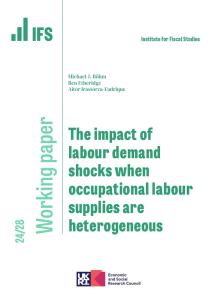Well, it looks like we might just about have avoided a recession. Economic forecasts for the coming year have been moving from the grisly to the merely deeply disappointing. Energy prices seem to be stabilising and look like coming down. The public finances are significantly better than that was expected only a few months ago. Time to cheer up at least a little?
Perhaps. But what matters more to most of us than whether we are in a recession or the state of the public finances is the state of our own, personal finances. Here the news is not great. Real earnings are not recovering ground that was lost last year. Mortgage payments are on their way up. Benefits for the poorest are not keeping up with inflation.
Take earnings. The good news is that they rose really pretty swiftly between December 2019, pre-pandemic, and last March by just over 6 per cent. The bad news is they have fallen precipitously since then. By last Christmas, average earnings were almost back down to their pre-pandemic level. Latest forecasts from the Bank of England suggest they have further to fall. With income tax thresholds frozen, median net-of-tax pay is likely to be comfortably below its December 2019 level by April this year.
On the bright side, one group who may be less badly affected are those on the national living wage. It is set to rise slightly in real terms and certainly will go up faster than the average. That will intensify what is now starting to be a protracted period of pay compression in the bottom half of the earnings distribution. Good news for those on the lowest wages, but also a considerable eroding of differentials and, perhaps, incentives to progress. I might return to that particular issue in another column.
Then there are households paying a mortgage. They are suffering a double whammy. The real value of their earnings is being eroded by inflation, but remember that is against a measure of inflation that doesn’t include the impact of higher mortgage interest payments. New estimates by my colleagues at the Institute for Fiscal Studies suggest that, across all households with a mortgage, higher interest rates, when fully in place, could reduce incomes after mortgage payments by a pretty whopping 7.5 per cent on average. The effect on younger mortgagors, who tend to have bigger outstanding loans, will be higher still, equating to a 10 per cent hit to their disposable incomes. That will feel equivalent to a world with 10 per cent inflation in all non-housing items and no pay increase. Given the preponderance of fixed-rate mortgages, these effects will take a while to roll out across the population, but about 1.4 million will come to the end of their fixed-rate deal during 2023.
So, despite a less gloomy economic outlook, the coming year still looks set to be unpleasant for millions on average earnings and, indeed, on somewhat above average earnings.
What about the poorest, though? One might suppose that those of them dependent on benefit payments would be relatively well insulated from some of these pressures. After all, after a period of dither and indecision over the autumn, the government came down in favour of raising benefit payments in line with inflation, thereby maintaining their real value. Unfortunately, it’s nothing like as straightforward as that.
Part of the problem is that the rate of inflation experienced by the poorest is, when energy and food prices are rising quickly, higher than the rate experienced by the better-off. So even if benefit levels keep pace with prices overall, many recipients will still feel a pinch.
The bigger structural problem is that the way we uprate benefits is not fit for purpose. They are increased each April in line with inflation as it was the previous September. The cumulative effect of that happening last year, and again this year, is that benefit levels won’t catch up with price levels. They will still be more than 6 per cent lower in real terms in the second quarter of this year than they were in the second quarter of 2019. Astonishingly, it will not be until April 2025 that benefit rates return to their 2019 levels. It will take that long for the lags to unwind. This is a ridiculous situation to be in.
Quite obviously, this is a group more in need of protection against inflation than any other. To offset that, the government has put in place additional cost-of-living payments of £900 next year for most benefit recipients. That actually will turn out to be a bit more expensive, and so a bit more generous on average, than simply sorting out the indexation system.
On average is doing a lot of work here, though. Some people will do very well. If you get only a small amount of benefit, perhaps because your earnings are just below the threshold at which entitlement runs out, then a £900 uplift is proportionately a big deal. But for others entitled to a lot of benefit — large families, for example — £900 will not be enough to make up for the shortfall in indexation. This system also introduces a ludicrous cliff-edge. You are passported on to this entitlement to £900 if you are entitled to any universal credit at all. The result is that a pay rise that takes you out of the universal credit net could end up losing you a lot of money.
Growth numbers and forecasts are important. Thank goodness they are getting better. But don’t be lulled into thinking we have reached the bottom of hole into which living standards have been sliding. We almost certainly haven’t. There are plenty of people, including some very poor ones, who will find the coming year, at best, no easier than they found last year.
This article was first published in The Times and is reproduced here with kind permission.










